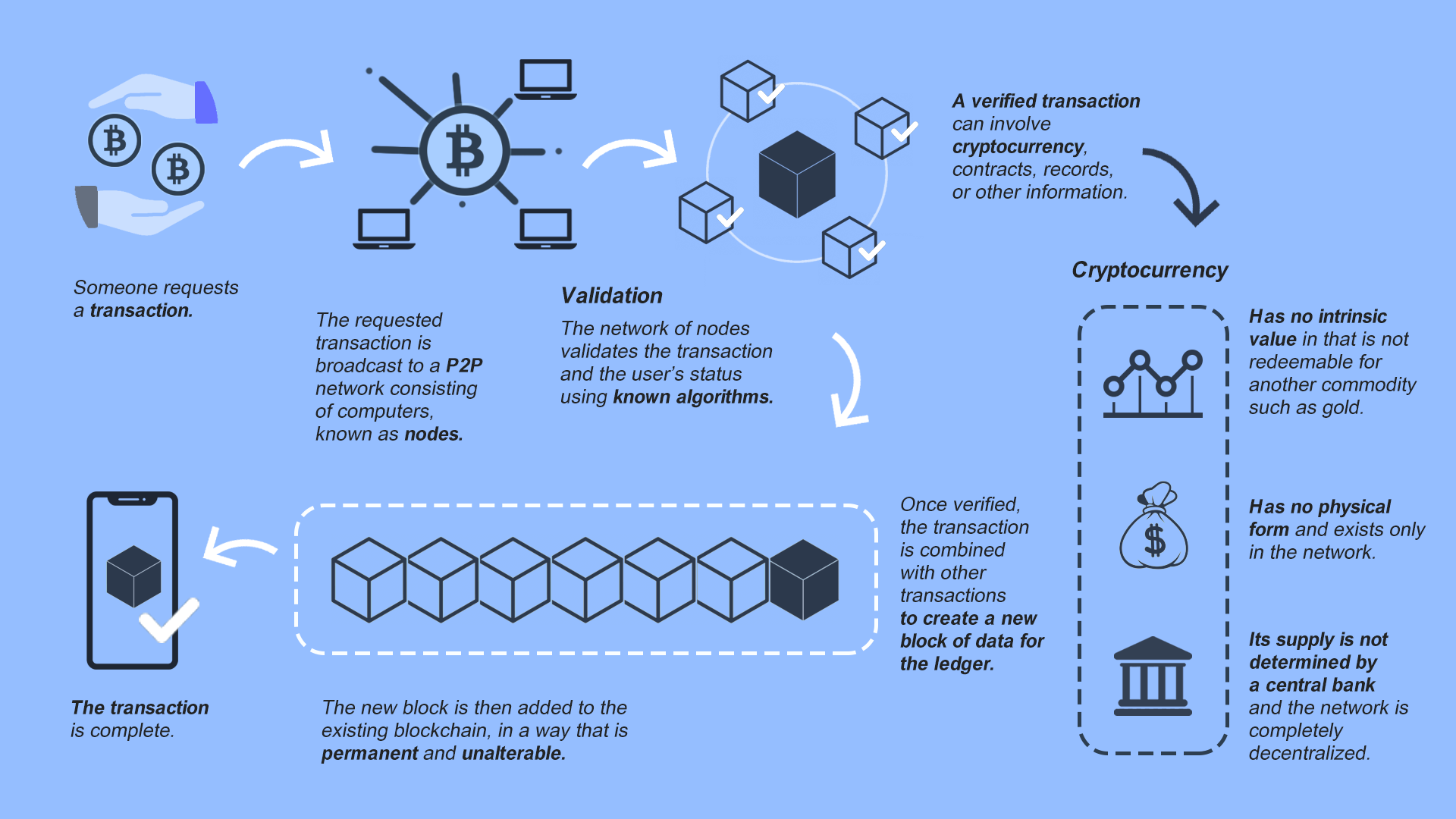Pi value cryptocurrency
A blockchain is a distributed database that is shared and verified via a computer network. That database makes up the underlying infrastructure of cryptocurrency systems, such as Bitcoin and Ethereum, for a decentralized record of transactions.< https://gutsoon.com/20-2/ /p>
Altcoins generally speaking are cryptocurrencies other than Bitcoin. They share characteristics with Bitcoin but are also different in terms of how they are created and verified. According to CoinMarketCap, Bitcoin and Ether alone accounted for nearly two thirds of the total cryptocurrency market, with altcoins making up the rest.
When you decide on which cryptocurrency to purchase, you can enter its ticker symbol—Bitcoin, for instance is BTC—and how many coins you’d like to purchase. With most exchanges and brokers, you can purchase fractional shares of cryptocurrency, allowing you to buy a sliver of high-priced tokens like Bitcoin or Ethereum that otherwise take thousands to own.
Cryptocurrency
A paper by John Griffin, a finance professor at the University of Texas, and Amin Shams, a graduate student found that in 2017 the price of bitcoin had been substantially inflated using another cryptocurrency, Tether.
On October 31, 2008, Nakamoto published Bitcoin’s whitepaper, which described in detail how a peer-to-peer, online currency could be implemented. They proposed to use a decentralized ledger of transactions packaged in batches (called “blocks”) and secured by cryptographic algorithms — the whole system would later be dubbed “blockchain.”
On 11 November 2022, FTX Trading Ltd., a cryptocurrency exchange, which also operated a crypto hedge fund, and had been valued at $18 billion, filed for bankruptcy. The financial impact of the collapse extended beyond the immediate FTX customer base, as reported, while, at a Reuters conference, financial industry executives said that “regulators must step in to protect crypto investors.” Technology analyst Avivah Litan commented on the cryptocurrency ecosystem that “everything…needs to improve dramatically in terms of user experience, controls, safety, customer service.”
Just two months later, on January 3, 2009, Nakamoto mined the first block on the Bitcoin network, known as the genesis block, thus launching the world’s first cryptocurrency. Bitcoin price was $0 when first introduced, and most Bitcoins were obtained via mining, which only required moderately powerful devices (e.g. PCs) and mining software. The first known Bitcoin commercial transaction occurred on May 22, 2010, when programmer Laszlo Hanyecz traded 10,000 Bitcoins for two pizzas. At Bitcoin price today in mid-September 2021, those pizzas would be worth an astonishing $478 million. This event is now known as “Bitcoin Pizza Day.” In July 2010, Bitcoin first started trading, with the Bitcoin price ranging from $0.0008 to $0.08 at that time.
These crypto coins have their own blockchains which use proof of work mining or proof of stake in some form. They are listed with the largest coin by market capitalization first and then in descending order. To reorder the list, just click on one of the column headers, for example, 7d, and the list will be reordered to show the highest or lowest coins first.

Future of cryptocurrency
Because PoS demands significantly lower hardware requirements than PoW, the energy needed to facilitate secure transactions will only continue to fall in the future. Some forecasting models show that Ethereum 2.0’s PoS model will be 99% more energy efficient than PoW models.
Another factor to consider is that crypto miners are increasingly using excess electricity that would otherwise go to waste. The emergence of crypto mining farms has soaked up extra capacity and prevented the waste of unused renewable energy.
Meanwhile, the Carbon Utility Token (CUT) is an example of a growing class of green assets designed in large part to help corporations manage their carbon allowances. The sale of each CUT token goes towards investments in carbon capture and carbon offsetting programs, representing a tangible step towards carbon neutrality in the crypto ecosystem. As more and more corporations begin to add Bitcoin and other cryptocurrencies to their balance sheets, it’s good to know that CUT provides an avenue to completely offset the carbon footprint behind each coin.
History is riddled with examples of otherwise good or neutral technologies being co-opted by bad actors and those ever-present human follies of greed, nescience, risks of opportunity or outright criminality. All of which are amplified in emerging, lightly regulated sectors and accelerated by technology. Indeed, no sector is risk-free, especially not one involving money. However, crypto punishes the errant at speed, giving bad actors few places to hide.


Leave a comment